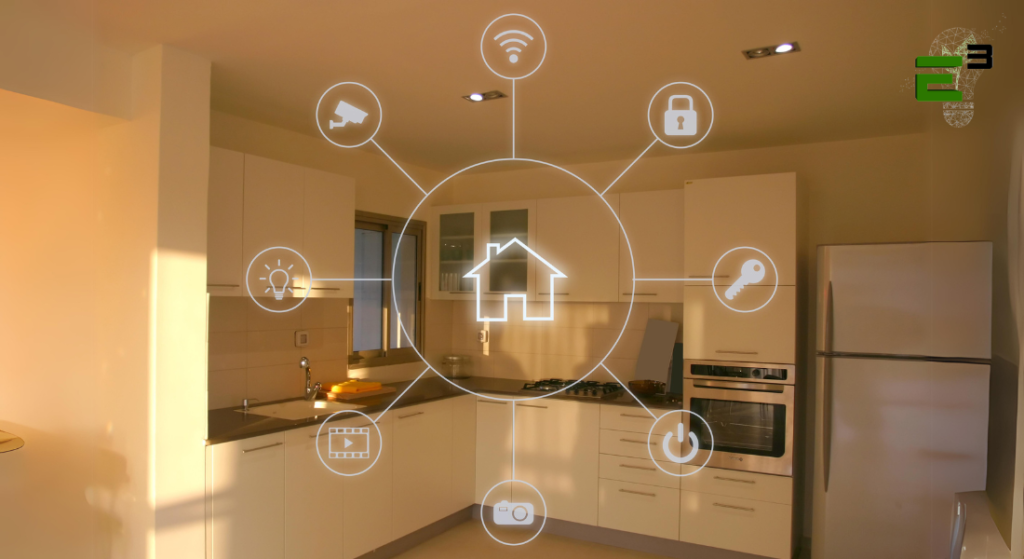Picture a home where you can control the lights, adjust the temperature, or even start your coffee maker without leaving your bed. This magical-sounding place is not from a science fiction novel but an automated home. Home automation is like having a personal butler for your house, making your life easier and your home smarter. In this blog post, we’ll explore the concept of home automation in simple terms and explain how it can be as energy-efficient as a regular home when used wisely. We’ll delve into the world of smart devices and systems that can be controlled remotely using your smartphone or voice commands, showcasing how they can not only enhance your convenience but also help you save energy. Let’s embark on this journey to discover how an automated home can offer you the best of both worlds: comfort and sustainability.

Balancing Convenience and Energy Efficiency
The impact of home automation on energy consumption hinges on a constellation of factors, each exerting a distinct influence. At the forefront is the energy efficiency of the automated devices and systems integrated into the home. How these components are configured and the manner in which they are utilized play equally pivotal roles in determining the overall energy profile of an automated household.
For instance, consider the realm of smart lighting. Automated lighting systems can be fine-tuned to adapt their brightness levels according to natural light conditions, thereby conserving energy. Meanwhile, the deployment of smart thermostats holds the potential to optimize the heating and cooling processes, curtailing energy wastage significantly. It is within the intricate interplay of these factors that the quest for a harmonious coexistence between convenience and energy efficiency in home automation unfolds.
Factors Influencing Energy Consumption
The effects of home automation on energy consumption are contingent upon several key factors. The energy efficiency of automated devices and systems, as well as their configuration and utilization, are pivotal determinants. For instance, smart lighting devices can be programmed to adapt their brightness in response to natural light levels, resulting in significant energy savings. Similarly, the integration of smart thermostats can lead to the optimization of heating and cooling processes, curbing energy wastage considerably.
The proficiency of these devices and the judicious choices made in their settings hold sway over the ultimate energy footprint of an automated home. The extent to which they harmonize the comfort and convenience of automation with energy conservation is a multifaceted dynamic, shaping the sustainable and efficient use of resources in the modern household. Careful consideration and responsible utilization of these factors are instrumental in achieving the delicate equilibrium between the advantages of home automation and energy efficiency.
The Importance of Proper Configuration
Careful setup and responsible use of automated systems are essential to ensure that home automation contributes to energy efficiency rather than hampers it. This includes scheduling devices to operate only when necessary, monitoring real-time energy consumption, and adopting practices that reduce waste.
The Role of Planning and Device Selection
The selection of automated devices and systems assumes a pivotal role in determining energy consumption. Opting for energy-efficient appliances and systems bearing energy efficiency certifications can yield a substantial impact. These choices can significantly reduce energy usage, resulting in both cost savings and reduced environmental impact.
Furthermore, thoughtful planning of home automation plays an instrumental role in achieving the delicate balance between convenience and energy efficiency. It involves configuring devices to operate efficiently and programming them judiciously. When implemented with a strategic approach, home automation can be harmonized to ensure optimal energy conservation while still providing the convenience and comfort that automation promises.
In essence, the synergy between prudent device selection and meticulous planning serves as a linchpin in the quest for energy efficiency in an automated home. It empowers homeowners to reap the benefits of automation while minimizing their environmental footprint and energy costs.
The Crucial Role of an Energy Audit
To optimize energy consumption in an automated home, considering the performance of an energy audit is a smart choice. An energy audit involves a detailed assessment of how energy is used in a residence, identifying areas of waste and inefficiency. In the context of an automated home, this audit can reveal opportunities to adjust the configuration of devices, optimize programming, and identify systems that can be upgraded to more energy-efficient versions. By making these improvements, homeowners can save significantly on their energy bills, making home automation a more affordable and sustainable long-term option. Therefore, an energy audit plays a crucial role in harmonizing the convenience of automation with energy savings, providing tangible benefits for both the environment and homeowners’ wallets.
An automated home has the potential to be just as energy-efficient as a conventional one, and in some cases, even more so when set up and used wisely. The critical factor lies in achieving a balance between the convenience that automation brings and a sense of responsibility in energy consumption. By making prudent choices in terms of devices and implementing best practices, it is entirely feasible to enjoy the best of both worlds: a comfortable and energy-efficient home.
In essence, the answer to the question, “Does an Automated Home Use More or Less Energy?” largely hinges on the choices and actions taken by the homeowner.
The power to make an automated home an energy-efficient and eco-friendly haven rests firmly in the hands of those who own and operate it. With the right decisions and a commitment to responsible energy use, a harmonious coexistence between automation’s convenience and energy efficiency can be realized, yielding a sustainable and comfortable living environment.



